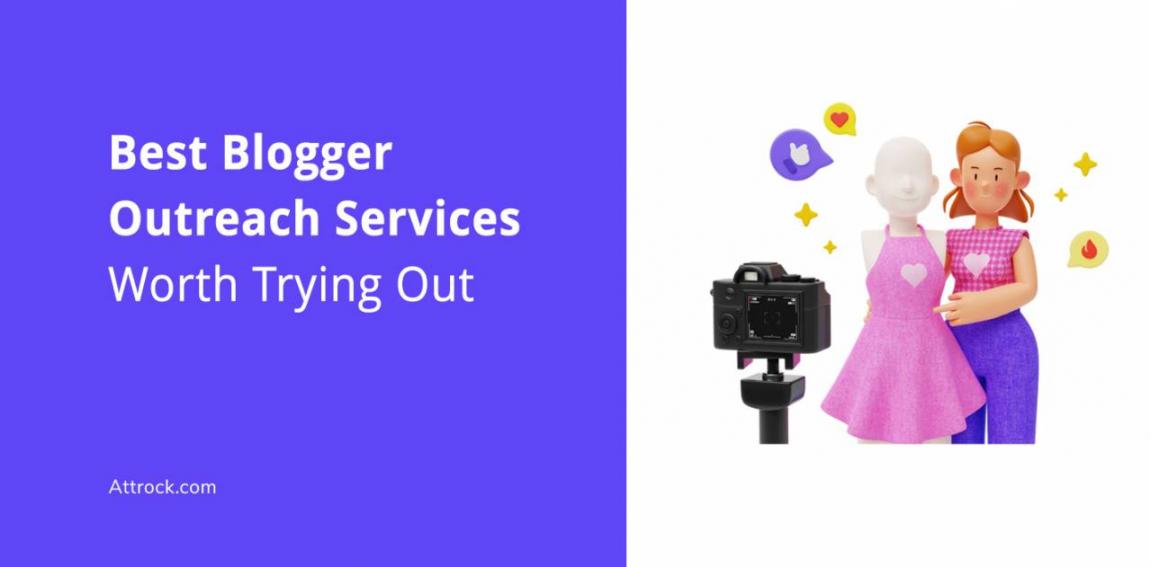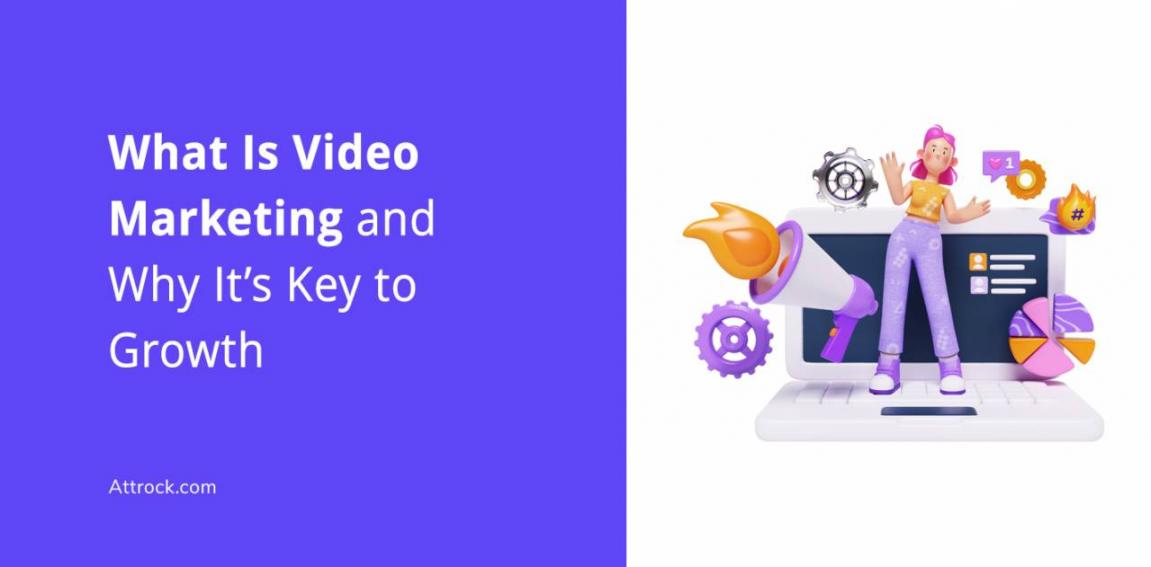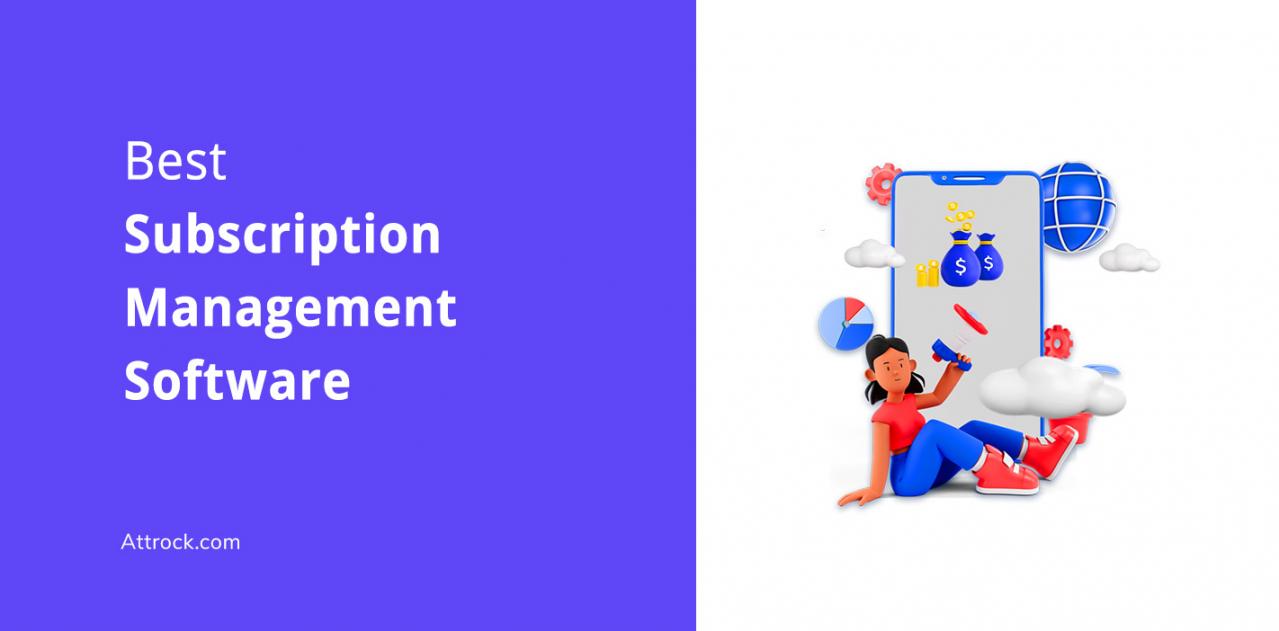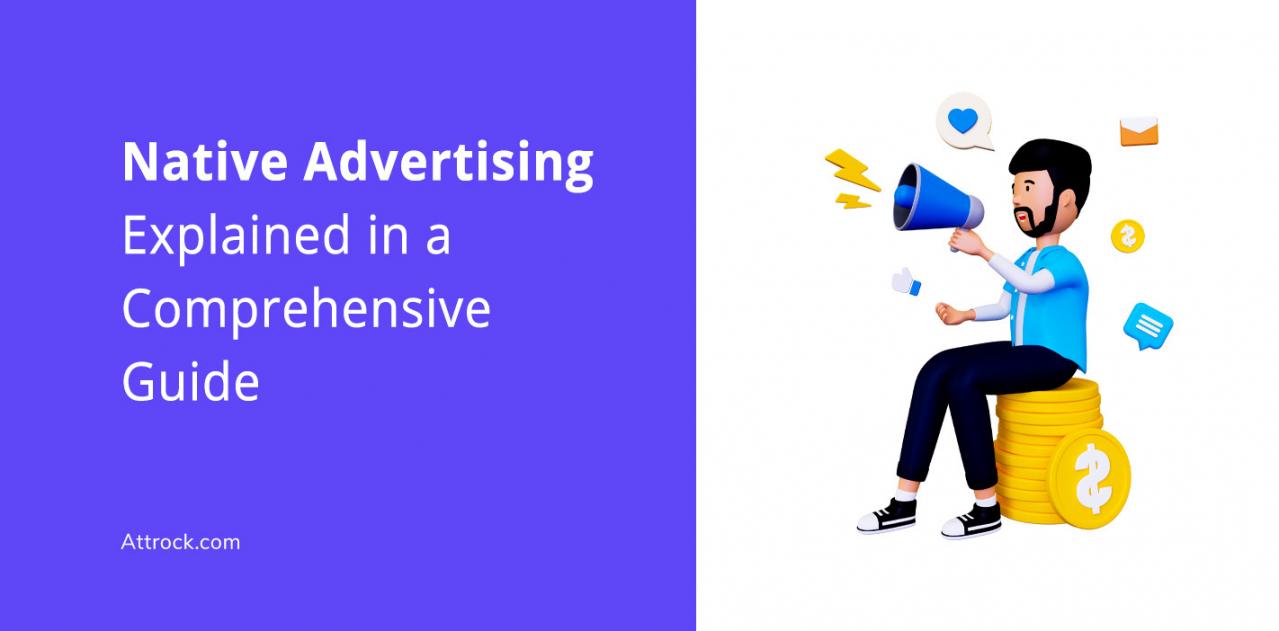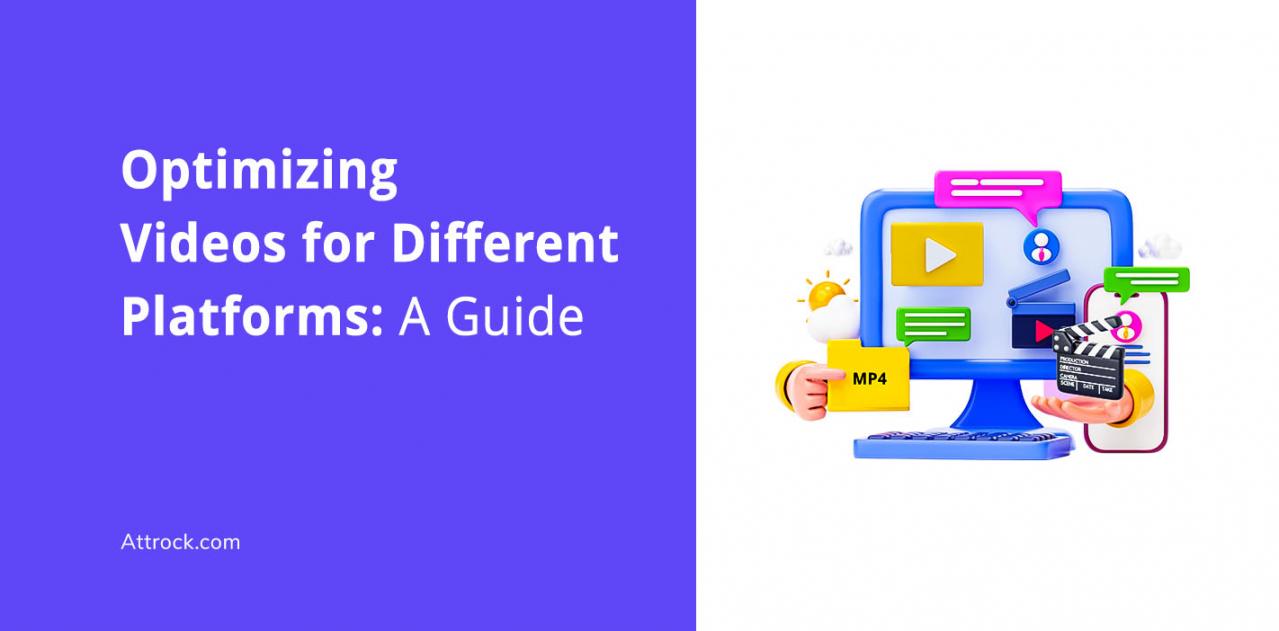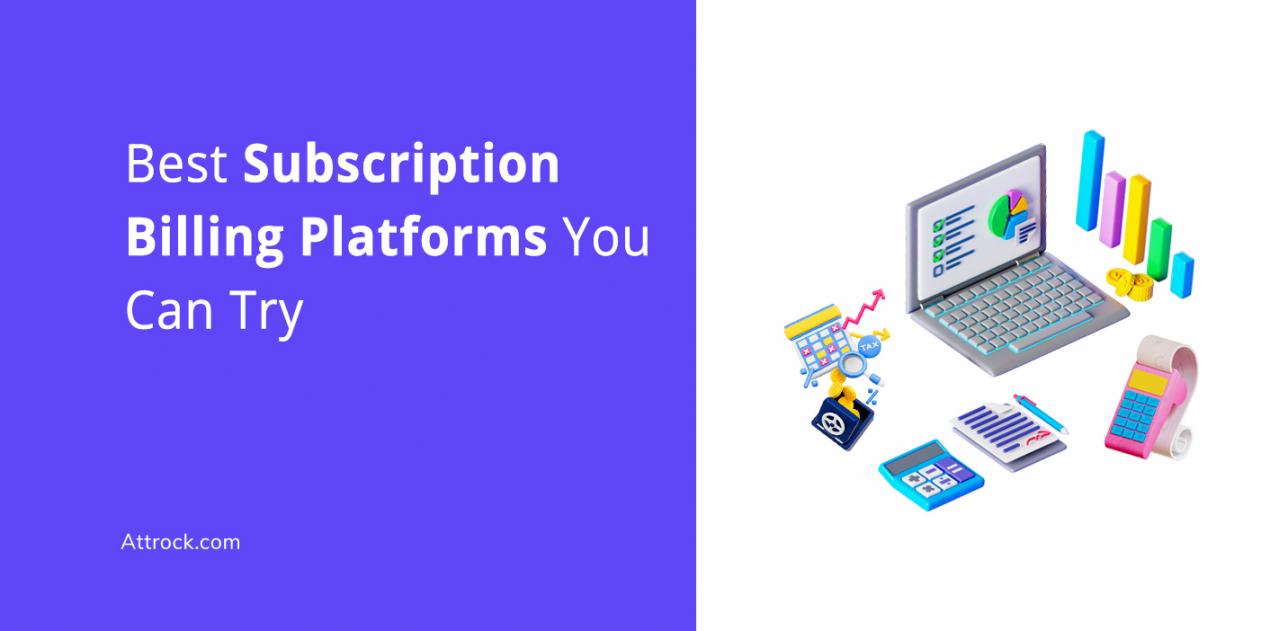You’ve probably heard that video marketing is king. But knowing how to create a video marketing strategy that works is where most people get stuck. Posting random clips without a plan doesn’t bring the desired results.
What you need is videos that drive action. It should help you achieve exactly what you’re aiming for, be it more clicks, more views, or increased sales. A rushed strategy will only end up wasting your time, money with nothing to show for it.
If you want to know how to create a video marketing strategy that will put your business on the map, this is for you. This quick breakdown will help you cut through the fluff to the heart of what matters most. Let’s get into it.
Table of Contents
What is Video Marketing?
Video marketing is the use of video content to promote and market your products or services, raise brand awareness, educate your audience, or drive more sales.
Video marketing isn’t merely about sales.
You can create informative and engaging video content to attract visitors to your website, increase email signups, boost social media engagement, etc.
If you don’t put effort to learn how to create a video marketing strategy, then you’re missing a great marketing opportunity for your brand.
Think about it.
The State of Video Marketing report by Wyzowl suggests that 87% of consumers have been convinced to buy a product or service after watching a video.
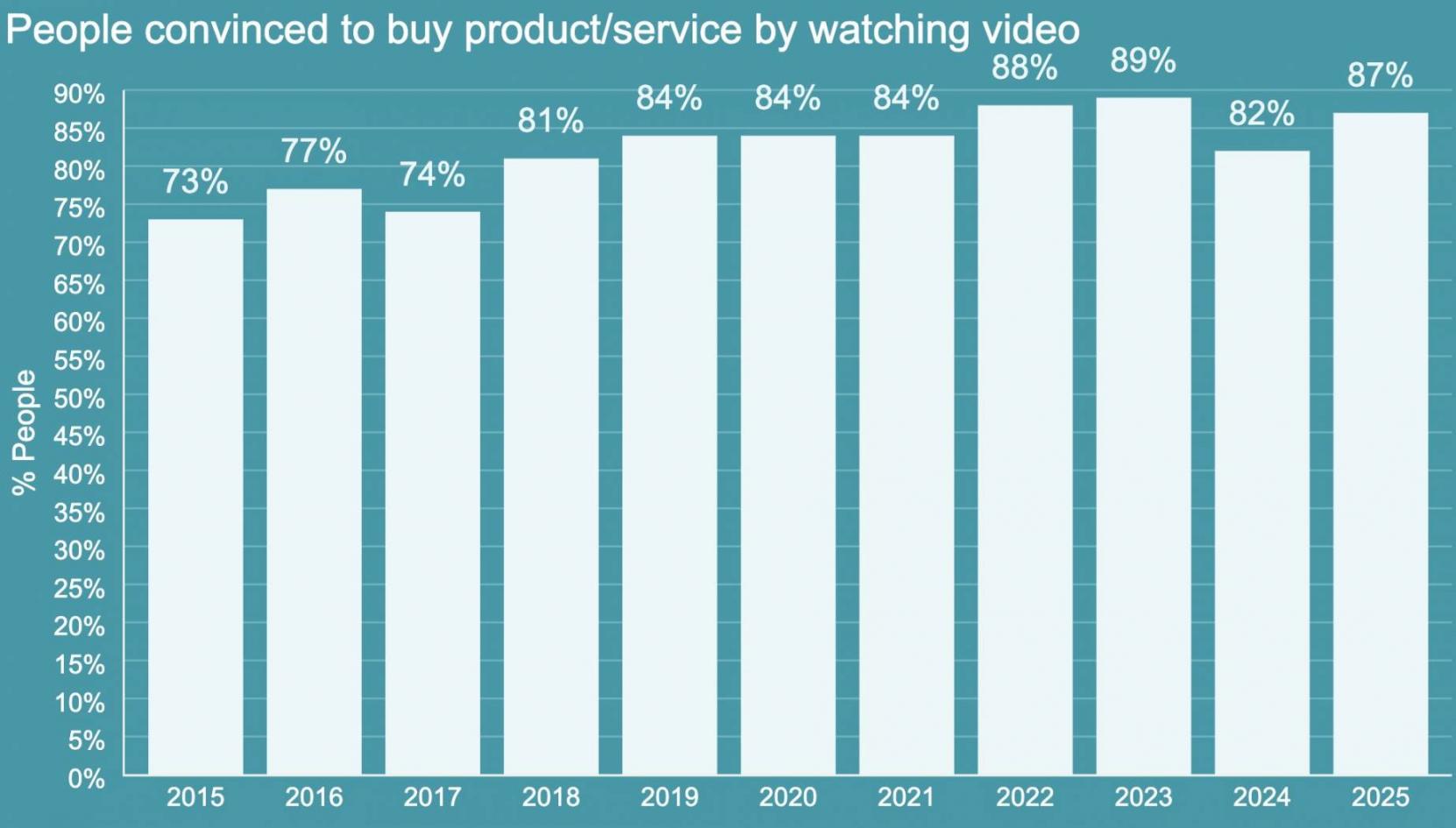
Image via Wyzowl
In the same report, 95% of surveyed marketers say video is a vital part of their marketing strategy in 2025.
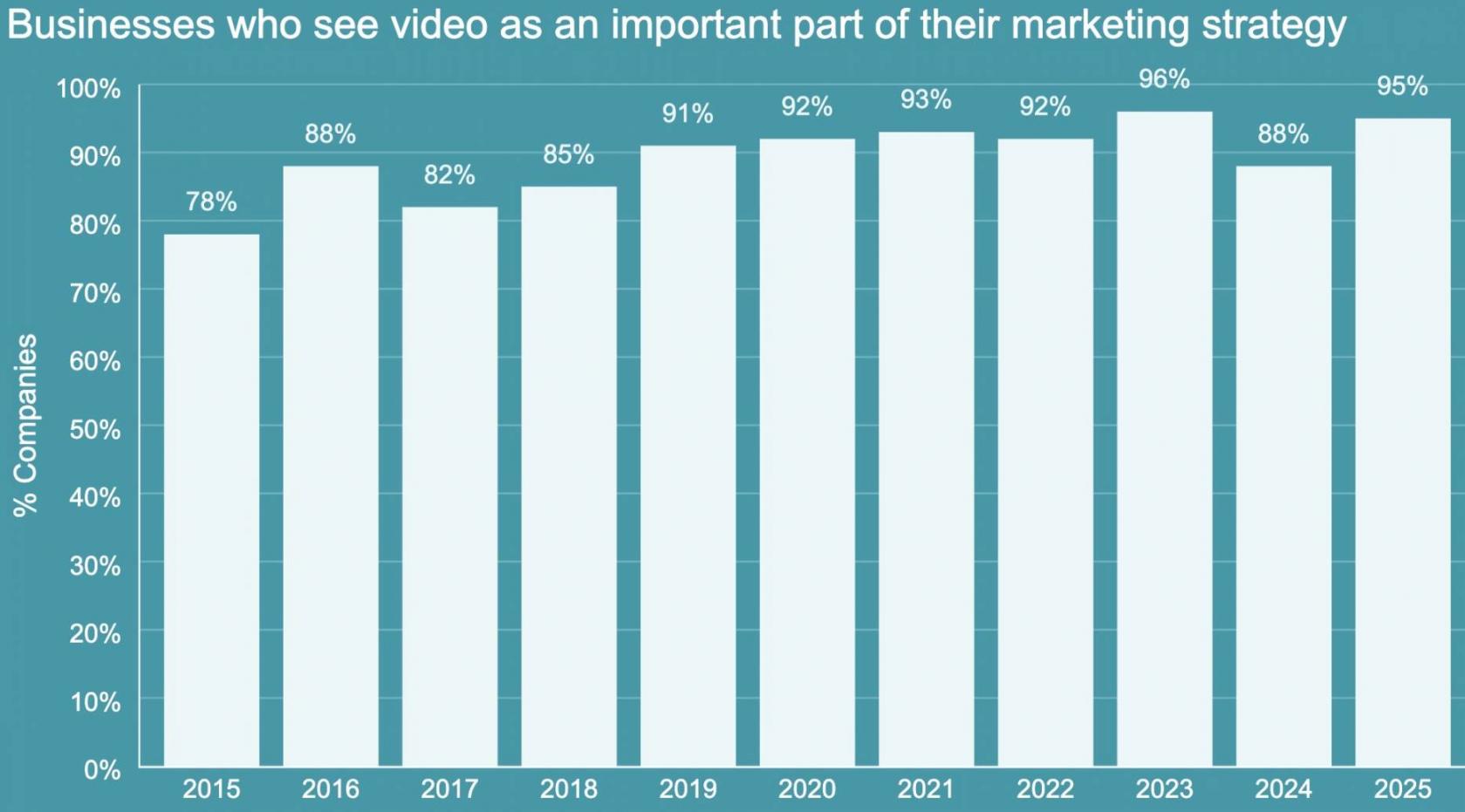
Image via Wyzowl
And 89% of businesses use video as a marketing tool.
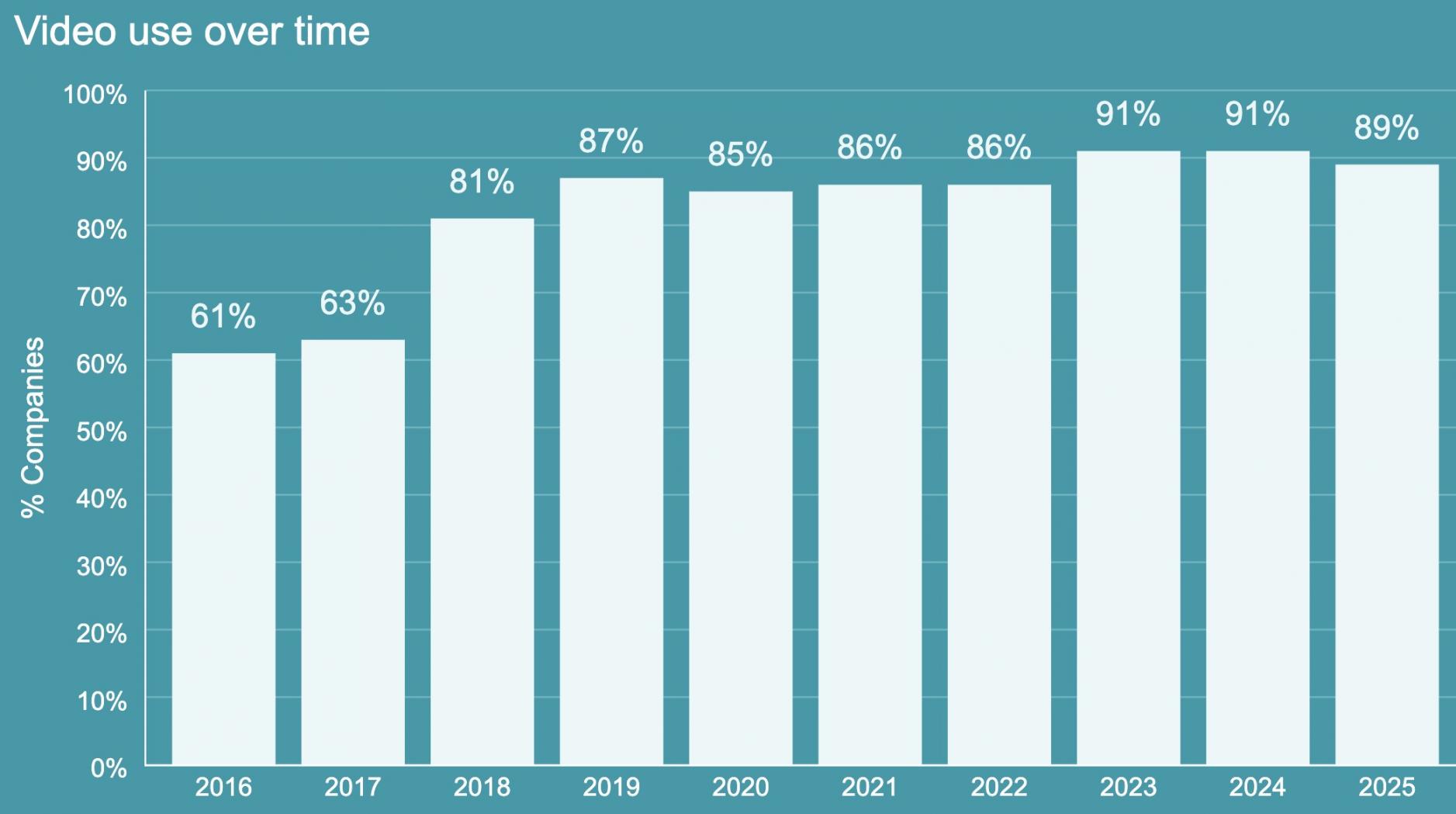
Image via Wyzowl
As you can see, ignoring video marketing is denying your business opportunities for growth.
The statistics above are just the tip of the iceberg though.
Read on to understand the importance of learning how to create a video marketing strategy and its benefits to your brand.
Benefits of Video Marketing to Your Business
Before we dive into how to create a video marketing strategy that works, let’s first look at the benefits of video marketing.
Boosts SEO
Including videos in your content keeps visitors on your site longer, which signals to platforms like Google that your content is valuable.
When you find keywords relevant to your audience and optimize your videos with targeted terms, engaging descriptions, and precise captions, you can significantly improve their visibility in search results.
The result? Increased visibility, higher traffic, and more potential customers discovering your business.
Sharing your videos on platforms like YouTube and linking back to your website can give your SEO an extra boost. Videos that are properly optimized often receive greater visibility in search results.
If you're wondering how to create a video marketing strategy that works, focus on crafting SEO-friendly titles, keyword-rich descriptions, and relevant tags that reflect what your audience is actively searching for.
Increases Brand Awareness
People remember videos more than text or images. So keep that in mind when figuring out how to create a video marketing strategy. A well-made video sticks in their minds, making your brand easier to recognize. The more they see your content, the more familiar your brand feels.
Good for Engagement
Videos are easier to digest than long blog posts and more fun than plain images. People are more likely to ‘like, comment, and share’ when a video grabs attention.
More engagement indicates to social platforms that your content is interesting. That helps push your videos to even more people. If your videos spark conversations, your brand stays in people’s minds.
Builds Trust
Videos make businesses feel more real. This further underscores the importance of learning how to create a video marketing strategy. Seeing a face, hearing a voice, or watching a demo creates a personal connection. That connection builds trust faster than text alone.
Improves Social Media Presence
Video content consistently outperforms other formats on social media. Platforms like LinkedIn, Facebook, TikTok and Instragram prioritize it in their algorithms, boosting visibility and helping your brand reach a wider audience.
Short, engaging social media clips keep people watching. The more time they spend on your content, the better your posts perform. That brings in new followers and potential customers.
Good for Lead Generation
Videos are one of the most effective tools for driving lead generation. They grab attention quickly and create a more personal connection with your audience. Even a short, engaging clip can spark interest and build trust — before potential customers ever visit your website.
Using lead forms in videos works well. Platforms like YouTube and LinkedIn let you add sign-up forms directly in the video. That means more leads with less effort.
Increased Customer Retention
Keeping customers engaged is key to long-term success. Videos help by providing helpful content even after someone buys. Tutorials, tips, and updates keep them interested.
Happy customers stick around and buy again. If they feel connected to your brand, they’ll stay loyal. That means less effort in finding new customers and more repeat business.
Video Marketing Improves SEO and Conversions
According to the Wyzowl report, 93% of marketers say video has helped them generate good ROI for their businesses and 84% have reported increased sales.
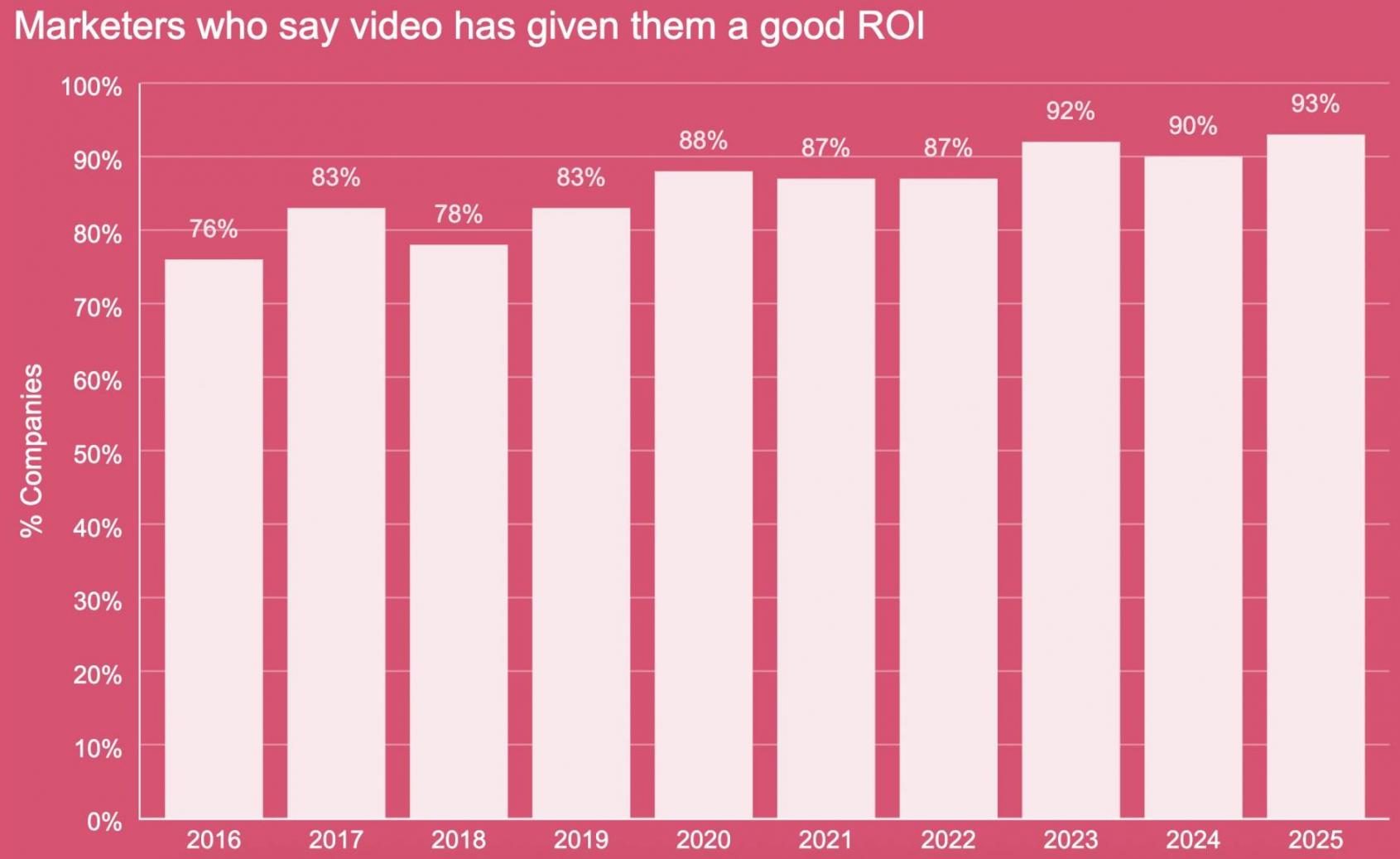
Image via Wyzowl
From these stats, it’s clear that video content can be a powerful marketing tool for businesses and brands of all sizes and industries.
Video Marketing Appeals to Mobile Users
Almost 48% of the total website traffic comes from mobile users.
According to a 2024 survey conducted by Statista, 98% of global users accessed the internet through their mobile phones, and video was among the highest consumed content.
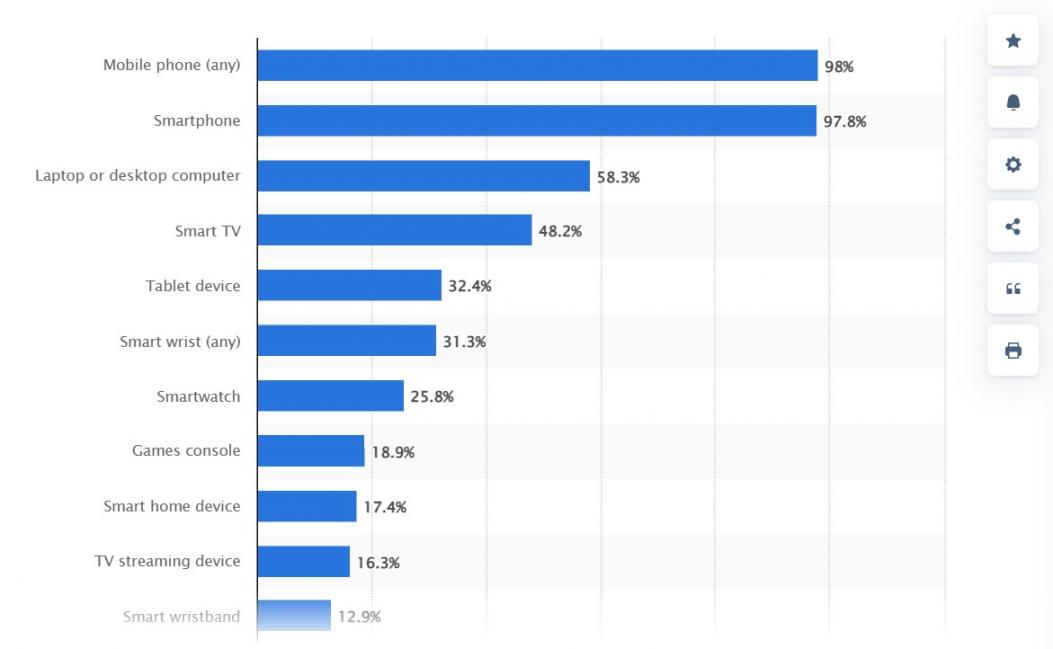
Image via Statista
This means that complementing your online marketing efforts with video can help you attract mobile visitors to your website.
Videos Have Higher Information Retention Rate
Due to the interactive nature of videos, people are more likely to retain information from watching videos than from reading textual content.
That means that when you learn how to create a video marketing strategy to promote your brand, your customers will remember you when they come across your message elsewhere.
Video Marketing Can Help Increase Brand Awareness
Another reason to learn how to create a video content strategy is that video can help build brand awareness and reach new customers.
36% of online marketers invest in video marketing to reach new audiences and educate more people about their company.
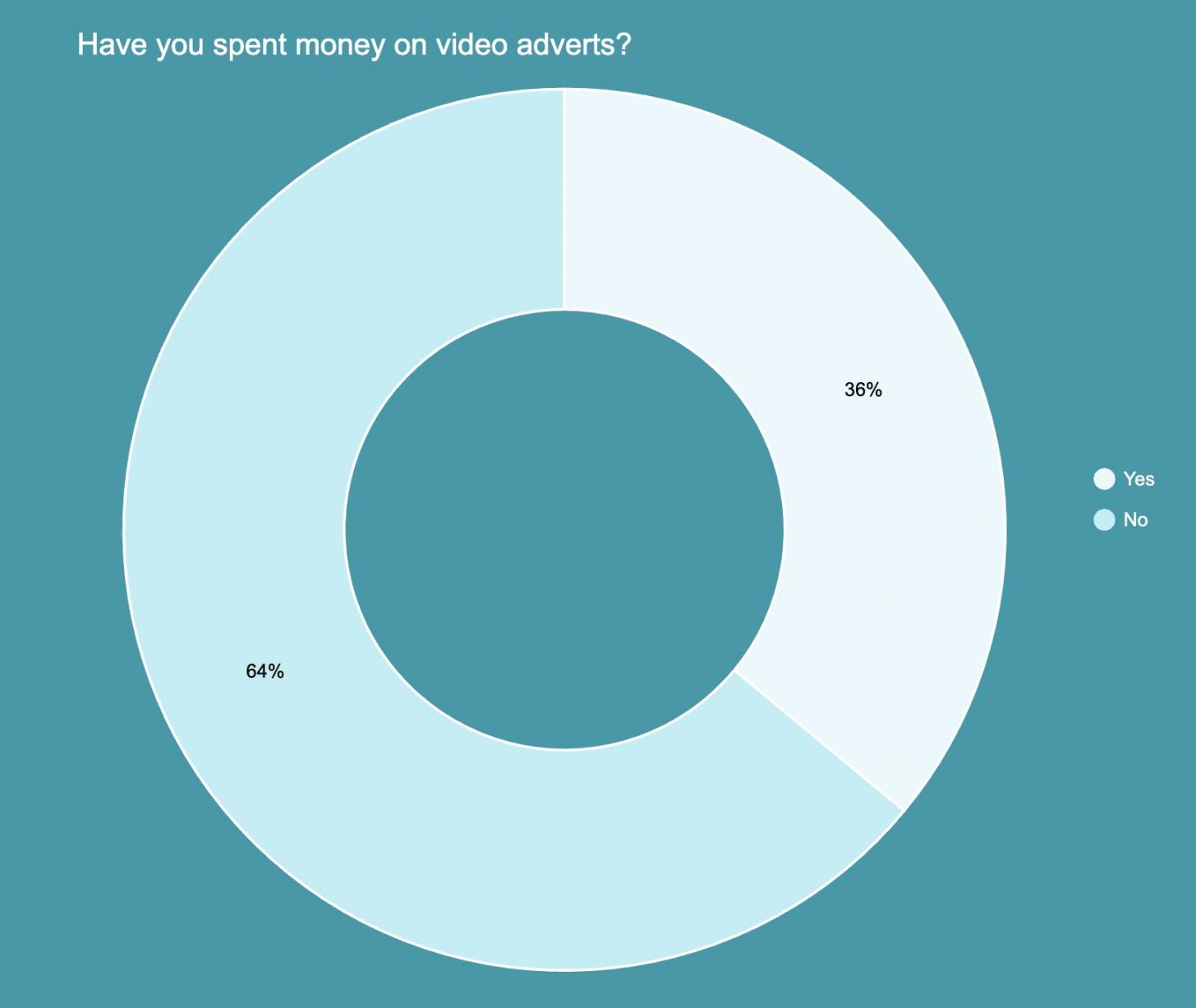
Image via Wyzowl
That said, to successfully learn how to create a video marketing strategy, consider using different types of video content such as product demos, live videos, testimonials, explainer videos, testimonial videos, social media videos, commercials, etc.
How to Create a Video Marketing Strategy in 11 Steps
Getting started with video marketing requires detailed planning and budgeting to enable you to create video content that resonates with your target audience.
Follow the video marketing tips below to understand how to create a video marketing strategy.
1. Identify Your Audience and Define Your Video Marketing Goals
Although videos appeal to different audiences, not all people will love the products you promote through videos. The first step in learning how to create a video marketing strategy is having a clear idea of who you want to target with your videos.
Ask yourself these questions:
- Who are you targeting with your video campaign?
- What type of video content resonates with them?
- What channels do they spend most of their time on?
- Which device does your audience use to watch videos?
Identifying your target audience will help you determine what types of videos to create and where to distribute them. This is where audience research comes in.
With the right audience insights, you can create user personas that help you define your ideal customers. The next step is to define your marketing goals.
Generally, most marketing videos fall under the following categories.
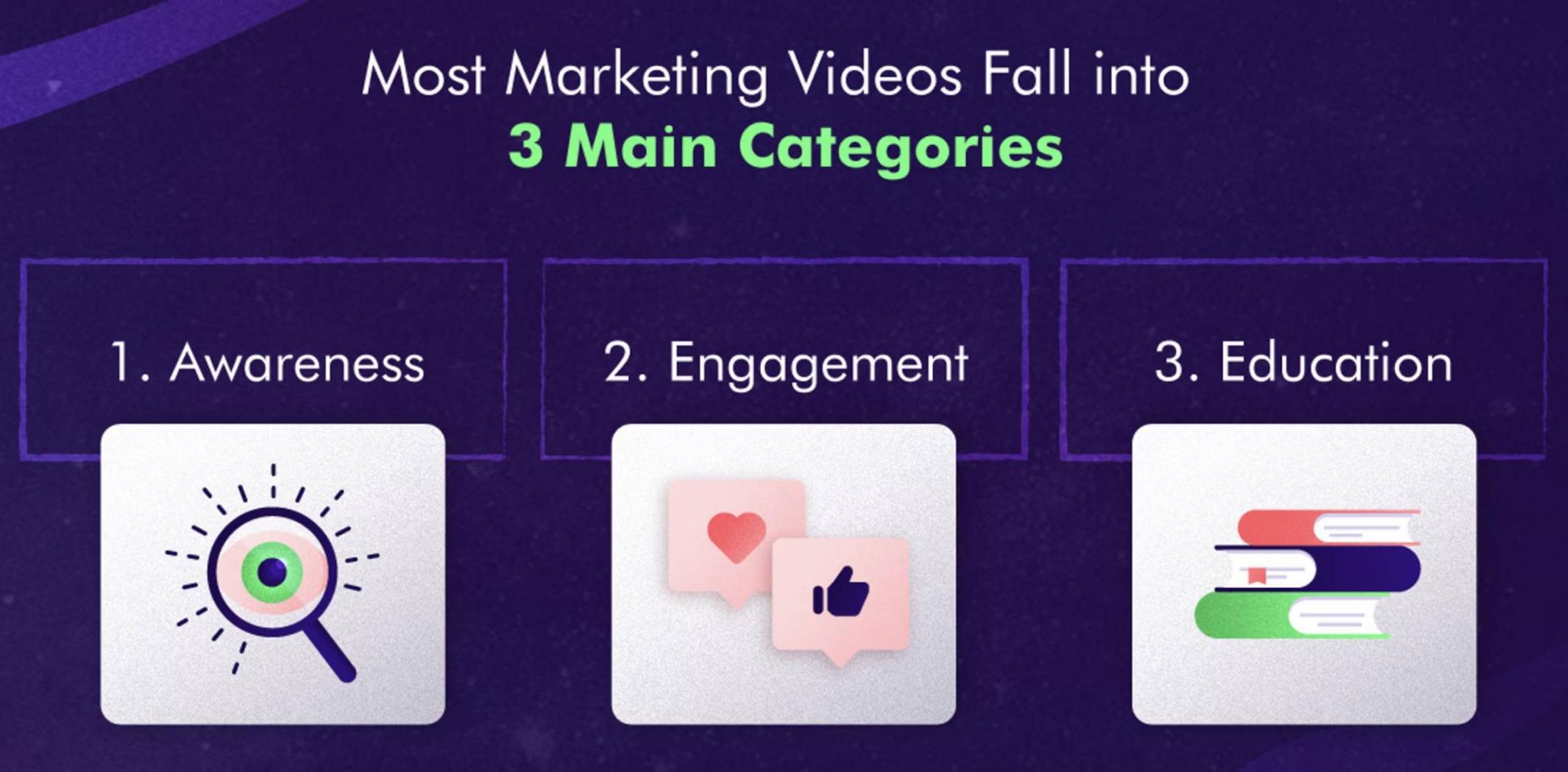
Image via Superside
- Improve awareness
- Increase engagement
- Educate the audience about a brand, its products or services
You could define specific goals like:
- Increase sales
- Drive more website traffic
- Retain more customers
- Grow a social media community
- Boost SEO
It’s important to have clear and simple goals. We also recommend splitting your goals into short-term and long-term.
2. Conduct Competitive Analysis
When navigating how to create a video marketing strategy that puts you ahead, you must first study your competitors.
What does competitive analysis mean?
It means taking a good look at what your competitors are doing with their video content. You’ll want to explore the types of videos they’re posting, how they’re engaging their audience, and the kind of results they seem to be achieving.
By comparing different approaches, you’ll get ideas for how to create a video marketing strategy that stands out.
Note that the main goal of a competitive analysis is to see where your competitors succeed and where they might fall short. It’s not about copying their work but about learning from it.
Identifying gaps in your competitors' content can provide an opportunity to step in with something fresh and more effective. It will be helpful when learning how to create a video marketing strategy.
Here are some additional tips to give you a clear understanding of what you need to do.
- Study their video styles – Pay attention to their video styles. Are they using animations, interviews, or behind-the-scenes footage? Take note of what stands out and consider how to adapt similar styles for your own content.
- Analyze their video lengths – Short clips tend to perform best on platforms like TikTok and Instagram, while longer videos often get better engagement on YouTube and Facebook.
- Check their captions and hashtags – Captions tell a story or add context, while strategic hashtags expand reach by targeting relevant audiences and trends.
- Track their posting schedule – Consistency is key. Regular, consistent posting helps build audience expectations and keeps followers engaged over time.
- Check their video thumbnails – Eye-catching thumbnails grab attention and encourage more clicks, often acting as the first impression of the content.
- Read audience comments – It shows what people love or dislike about their content. The comments offer valuable insights so you can tailor your content.
- Observe their call-to-actions – Notice whether they ask viewers to subscribe, visit a website, leave comments, or share, and how those CTAs drive engagement or conversions.
3. Develop a Content Plan and Storyboard
The next vital step in mastering how to create a video marketing strategy is developing a content plan and then storyboarding everything.
A content plan is a roadmap for your video marketing efforts. It’s about deciding what kind of videos you want to make, when to release them, and how they’ll fit into your overall marketing goals.
By having a clear plan, you make sure that every video you create serves a purpose and aligns with your brand’s goals. Once your content plan is set, the next step is storyboarding.
This is where you sketch out how each video will play out, scene by scene. Storyboarding helps you visualize your content before you start filming. It shows you how each scene transitions and what needs to be captured on camera.
To best master how to create a video marketing strategy through storyboarding, follow these simple tips:
- Plan topics – Make a list of ideas so you’re never stuck.
- Sketch a basic storyboard – You don’t need to be an artist. Even rough sketches can help visualize each scene and organize your shots.
- Decide on a style – Whether it’s animated, live-action, or text-based, select a format that aligns with your brand and message.
- Use a simple script – Write what needs to be said without making it too long.
- Break the video into sections – Break your storyboarding into clear sections. There should be an attention-grabbing intro, a focused main message, and a strong CTA.
- Plan the right pacing – Ensure your plan the pace as too slow gets boring, too fast is confusing.
- End with a clear message – Tell viewers exactly what to do next, whether it’s following your page, visiting your website, or sharing the video.
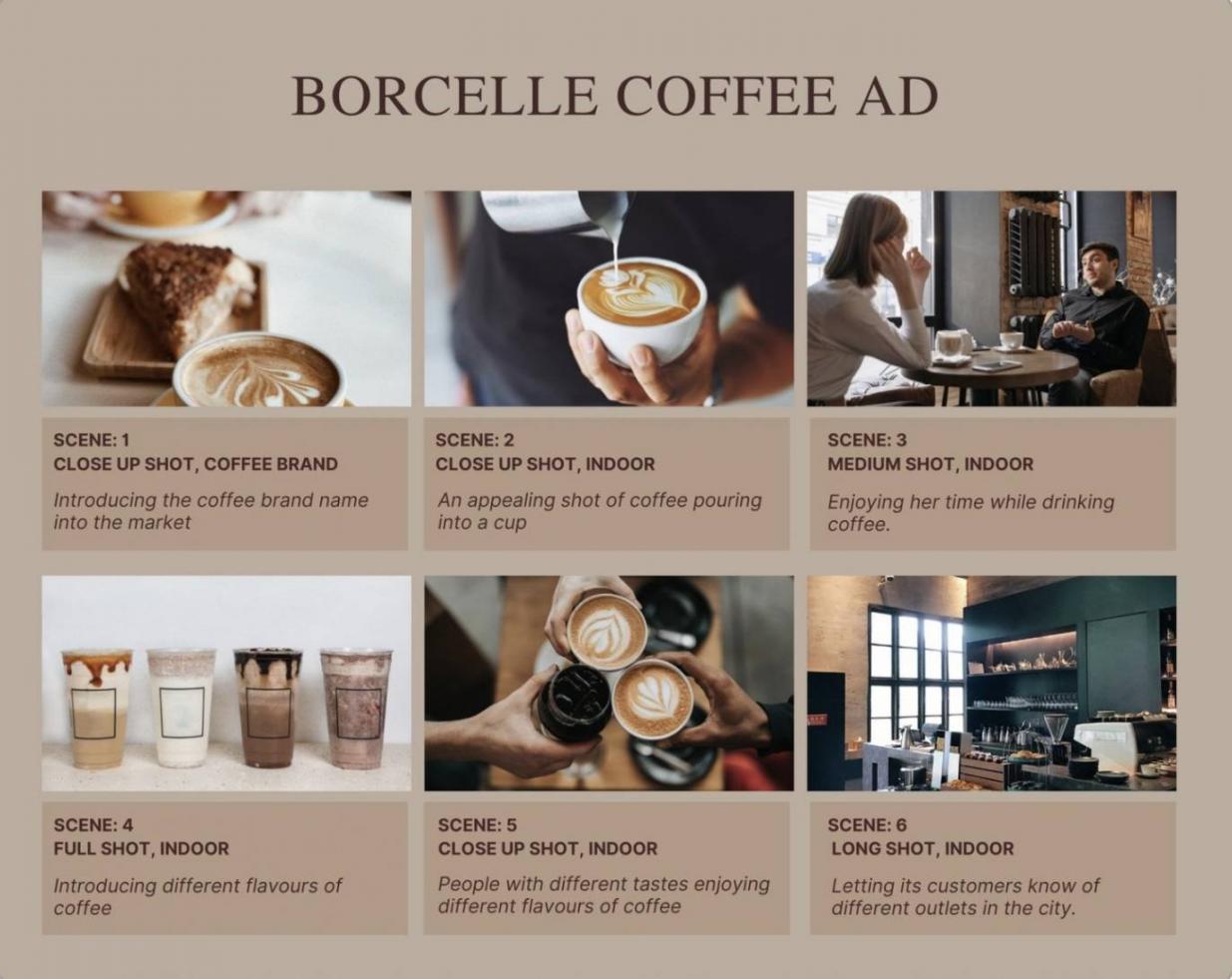
Image via Canva
Storyboarding is especially helpful when you're trying to figure out how to create a video marketing strategy that flows smoothly and keeps your audience engaged from start to finish.
4. Set a Budget and Decide a Timeline
When it comes to learning how to create a video marketing strategy, your video marketing budget will impact many marketing decisions. This includes how many videos you can create, whether you will outsource or produce videos in-house, how long your campaign will run, etc.
Remember that setting a huge budget doesn’t necessarily guarantee great results. The most important thing is to ensure your budget can help you produce good-quality videos that help you achieve your goals.
The good news is that there are tons of ways to create video content. Besides, you don’t need a huge budget to start running video marketing campaigns.
You can capture videos using your smartphone or use online video creation platforms such as Loom, Vidyard GoVideo, VideoForm, etc.
If you plan to outsource marketing video production to professionals, you can expect to spend anywhere from $2,000 to $50,000 for a professional video. You’ll spend less than $5,000 if you create your video in-house.
Next, decide the duration of your campaign, depending on your budget and marketing goals. Your campaign should run long enough to achieve your goals, without exceeding your budget.
To ensure you don’t go way over your budget when trying to figure out how to create a video marketing strategy, follow these tips:
- Break down costs – List expenses like filming, editing, actors, equipment, and paid advertisements.
- Start small if needed – Short, straightforward videos that are easy to produce can still be very effective.
- Consider free tools – Many apps help with video editing and graphics without extra costs.
- Allow sufficient time for editing – Video editing is a time-consuming process, so avoid rushing it to prevent costly mistakes.
- Set deadlines for each step – Filming, editing, and posting all need a schedule.
- Don’t overcomplicate things – A clear plan avoids wasted time and money.
- Track results – If something isn’t working, adjust your spending and timeline.
- Reuse content – One video can be clipped into shorter ones for different platforms.
5. Develop Messaging and Select the Type of Video
This is a crucial stage in mastering how to create a video marketing strategy. It’s the stage where you need to determine the type of video to produce and how you will tell your story.
You can conduct research to determine which videos your audience likes to watch.
Generally, explainer videos are the most popular types of marketing videos marketers produce, followed by social media videos.
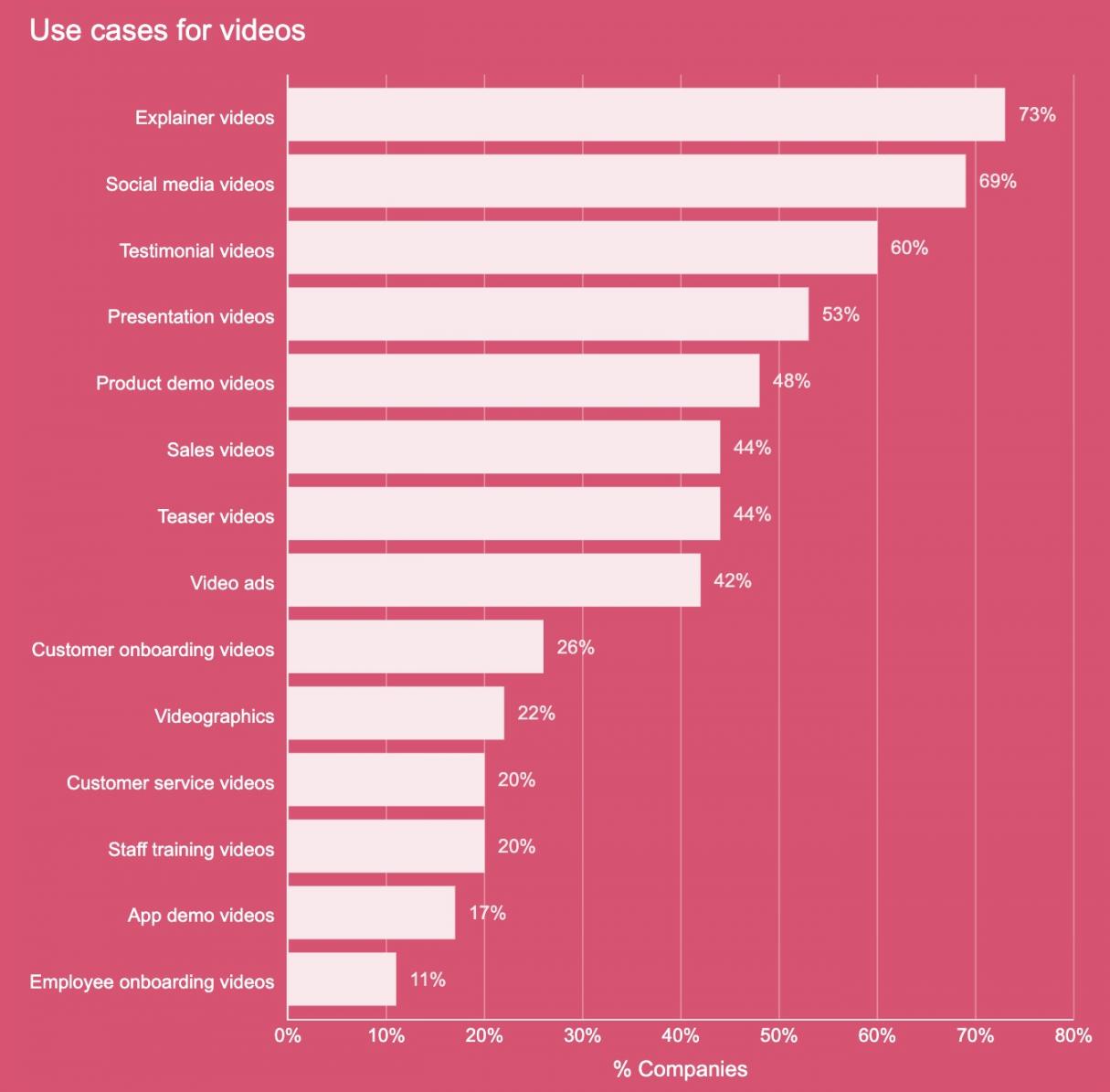
Image via Wyzowl
You can also create case studies, webinars, corporate brand videos, product demos, how-to videos, and more depending on what resonates with your target viewers.
Some tips you can follow for better results include the following.
- Pick one clear message – Don't try to say too much. Focus on one idea and make it stick.
- Decide on the right video type – Do you need a how-to video, a testimonial, or a fun promotional video? Pick what fits.
- Use emotion – Make your audience laugh, feel inspired, or relate to your story.
- Show, don’t just tell – Use visuals to explain, not just words. People remember what they see.
- Add captions – Many people watch on mute. Make sure they still get your message.
- Stay on brand – Keep your tone, colors, and style the same as the rest of your marketing.
6. Decide Your Video Production Approach
Now that you’ve decided what type of videos to produce, you need to decide how to produce them.
Note that your budget will dictate how to create a video marketing strategy. For instance, if you have a tight budget, you can use your in-house team or shoot video footage with your phone.
The good news is that there are plenty of online video makers that are easy to use for everyone.
If you have enough budget, you can hire a team of professional video creators or hire a video production company.
A good rule of thumb is to outsource high-value videos such as client testimonials and case studies and then have your in-house team create videos for social media videos for TikTok, Instagram, Facebook, and other channels.
Consider these tips as you decide on the right approach for your video marketing efforts.
- Ensure you have the right tools – Quality cameras, proper lighting, and reliable editing software all play a crucial role in determining the professional appearance and feel of your final video.
- Choose between DIY or professional help – If quality is a top priority, hiring experts is the best option. But, if you’re working with limited funds, a DIY approach is still very effective.
- Think about time – A big production takes longer. Be realistic about deadlines.
- Check your team's skills – If no one on your team has video editing experience, outsourcing parts of the process may save time and improve results.
- Test before launching – Shoot a small clip first. This gives you a chance to make adjustments before going all-in on a full production.
- Keep backups of everything – Save raw footage, scripts, and edits. You might need them later.
7. Come up With a Video Marketing Content Calendar
Now that you have set up everything, you need to create a video content calendar.
A video content calendar will help you to stick to a particular schedule. It’ll also help you organize all your video ideas, edit videos timely, and schedule your video uploads.
The last mistake you want to make when trying to master how to create a video marketing strategy is to produce a single video and stop there. It won’t bring in any results. You need to be consistent with your video marketing strategy to keep your target audience engaged with frequent new videos.
You can create a simple video content calendar with Calendly, or using Google Sheets, or Canva’s pre-made template.
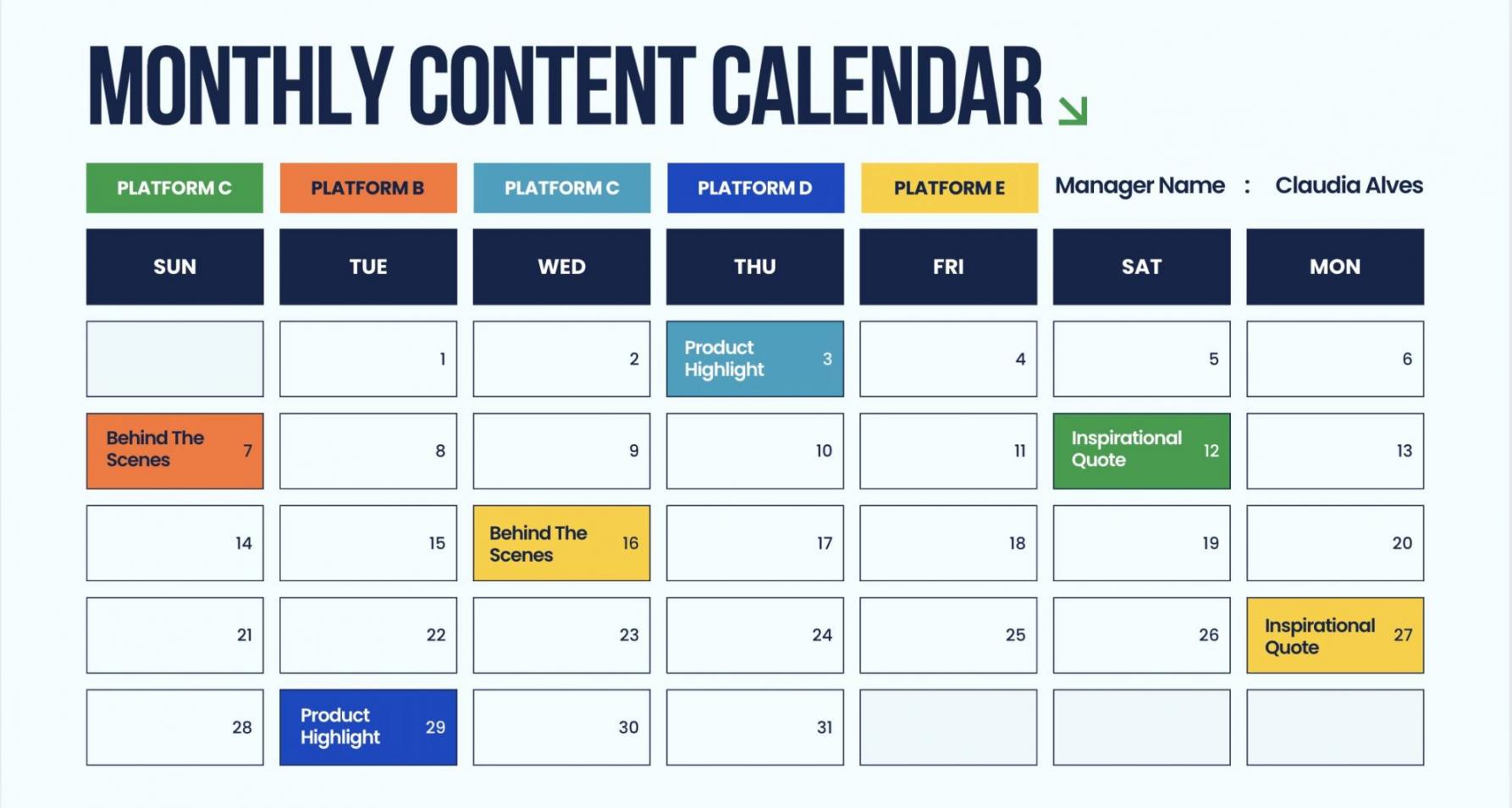
Image via Canva
It’s also important to keep your video content calendar filled in advance, for at least a quarter.
To get the most out of your video content marketing calendar, consider these tips.
- Use a posting schedule – Decide how often you’ll post and stick to it. Consistency builds trust.
- Create a mix of content – Tutorials, behind-the-scenes, and product demos keep things fresh and interesting.
- Batch your content – Film multiple videos in one go. It saves time and keeps your content flowing.
- Leave room for trends – Stay flexible so you can jump on viral topics when they pop up.
- Repurpose old videos – Turn long videos into short clips or update past content with fresh details.
8. Optimize Your Video Marketing Strategy for Better Results
Till now, you’ve learned how to create a video marketing strategy. Now, it’s time to learn how to optimize it further before you launch your campaign.
Optimizing video marketing makes a huge difference in how well your videos perform. Small tweaks can boost engagement, reach, and views.
Good optimization also helps more people find your videos. Using the right keywords in titles, descriptions, and tags improves search rankings. Better thumbnails and captions make your content more inviting.
Here are a few points to observe that can help you learn how to create a video marketing strategy that works:
- Hook viewers fast. The first few seconds matter. Start strong to capture attention immediately.
- Write strong titles. Keep them clear, catchy, and interesting. Avoid clickbait because that will make your viewers not take you seriously.
- Optimize for search. Use keywords in titles, descriptions, and tags so people can find your videos.
- Make thumbnails stand out. Bright colors, bold text, and clear images boost clicks.
- Engage with comments. Reply to viewers and start conversations to build a loyal audience.
9. Choose Your Video Promotion Platforms
Creating a video is half the battle. You also need to get it in front of the right audience. Therefore, it’s important to identify the right video platform to promote your videos.
Since you started by identifying your target audience and creating user personas, it should be easier to determine the right social media platforms to promote your videos
Some of the most popular video distribution platforms include:
- Your website
- Blogs
- Social media platforms like Facebook, Instagram, TikTok, LinkedIn, Twitter, etc.
- Video hosting platforms like YouTube, Wistia, Vimeo, etc.
Note that the choice of your video promotion platform depends on your target audience and the types of videos you produce.
10. Identify Key Metrics to Track the Performance of Your Video Marketing Strategy
It’s not enough to execute your strategy. You also need to figure out if it’s successful in helping you achieve your goals.
That’s why you need to identify key video metrics to measure the performance of your marketing campaign. Focus on important metrics that impact your campaign, like the following.
- View count – More views mean more reach. Check which videos get the most attention.
- Watch time – See how long people watch before they drop off. Longer watch time means better engagement.
- Engagement rate – Likes, comments, and shares indicate whether people are engaging with your content.
- Click-through rate (CTR) – This shows how many people click on your video after viewing the thumbnail.
- Traffic sources – Find out where viewers come from. Is it social media, search, or direct links?
- Playback locations – Find out where your videos get watched the most. Is it YouTube, Facebook, or embedded on a website?
- Retention rate – This tracks how much of the video people watch. High drop-off means they lost interest.
- Conversion rate – See if viewers take action, such as signing up, making a purchase, or visiting your site.
- Shares and reposts – If people share your video, it means they find it useful or entertaining.
- Audience demographics – Check who’s watching. Knowing the demographics of your audience can help you refine your content.
Once you have determined your key metrics, start promoting your videos following the 80/20 rule. The rule states that 20% of your time should be spent creating video content and 80% promoting it.
11. Adjust Strategy Based on Performance Data
Knowing how to create a video marketing strategy is just the first step. After making your video, you need to continually assess its performance to understand what worked and what didn’t.
As you develop a video marketing strategy, set aside time at the end of the marketing campaign to assess what you have or have not achieved.
For example, if a video is receiving a large number of views but people are dropping off halfway, it could mean that your content isn’t holding their attention. Or, if your call-to-action isn’t getting clicks, maybe you need to rethink how you're presenting it.
By continuously monitoring and adjusting based on performance data, you can fine-tune your efforts, ensuring that your video marketing strategy is always moving in the right direction.
FAQ
Q1. What is a video marketing strategy?
A. A video marketing strategy is a plan created by a marketing team that guides their video marketing campaign from the start to finish.
It lays out every task involved in the video content creation, curation, and distribution of videos to promote products or services.
Q2. What is video marketing?
A. Video marketing is simply the use of videos to achieve set goals and objectives. For instance, marketers use video content to promote and market their products, increase traffic to their websites, etc.
Q3. How do I start a marketing video campaign?
A. Build a successful video content strategy using these video marketing tips:
- Identify your target audience and define your marketing goals
- Conduct Competitive Analysis
- Develop a Content Plan and Storyboard
- Set a budget and decide on a timeline
- Develop messaging and select the type of video to produce
- Decide your video content production approach
- Come up with a video content calendar
- Optimize your video marketing strategy for better results
- Choose your video promotion platforms
- Identify key metrics to track the performance of your video content strategy
Q4. What are the types of video marketing?
A. The most popular types of video content are:
- Educational videos or how-to videos
- Animated video
- Explainer video
- Product videos
- Behind-the-scenes videos
- Case studies and testimonial videos
- Social videos
- Demo videos
- Live videos
- Expert interviews
Q5. How do businesses use video marketing?
A. Video marketing helps businesses to promote their products or services. Marketers can create high-quality video content to increase engagement, boost SEO and conversion rates, reach new audiences with a new medium, etc.
Ready to Launch Your Video Marketing Campaign?
Video marketing isn’t a new thing. It’s been here for a while and is here to stay. However, people are consuming more video content these days than written content.
What does this mean?
You need to learn how to create a video marketing strategy that can help you produce viral videos that encourage people to take action.
You should keep your target audience in mind, and set specific video content marketing objectives, budget, and timeline for your campaign. Need help with your efforts to learn how to create a video marketing strategy?
Leverage Attrock’s professional content marketing services to run successful campaigns and boost impact with our video editing services for high-quality, engaging content.







